 |
|
JCSAT-14 (Falcon 9) 6 May 2016 |
Space Launch Complex 40 Cape Canaveral Air Force Station |
Page One of Two |
|
SpaceX’s Falcon 9 rocket delivered JCSAT-14, a commercial communications satellite for SKY Perfect JSAT Corporation, to a Geostationary Transfer Orbit (GTO). The Falcon 9 rocket lifted off at 1:21 a.m. on 6 May 2016 from Space Launch Complex 40 at Cape Canaveral Air Force Station. Following stage separation, the first stage of Falcon 9 successfully landed on the “Of Course I Still Love You” droneship positioned several hundred miles offshore in the Atlantic Ocean. SKY Perfect JSAT is a leading satellite operator in the Asia-Pacific region and provides high-quality satellite communications to its customers using its fleet of 15 satellites. JCSAT-14 is a Space Systems Loral (SSL) telecommunications satellite that will replace JCSAT-2A, providing coverage to Asia, Russia, Oceania and the Pacific Islands. With C- band and Ku-Band transponders, the satellite will extend JCSAT-2A’s geographical footprint and address fast-growing mobility markets across the Asia-Pacific region. |
|
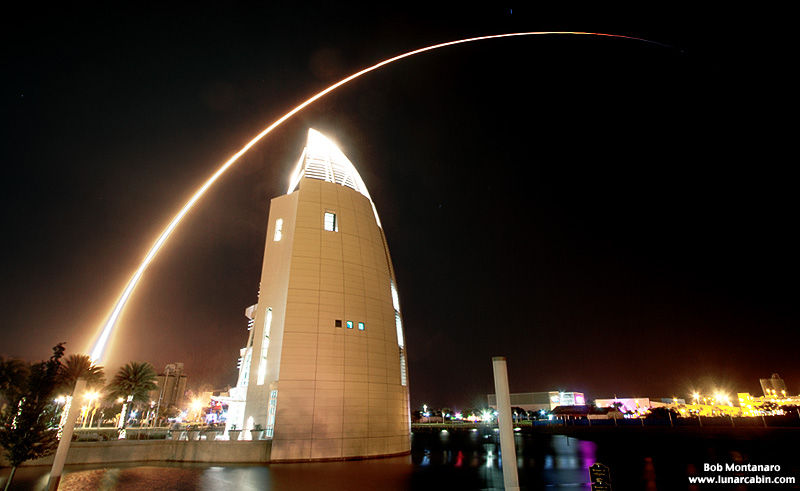 |
|
The Falcon 9 carrying JCSAT-14 arcs over Exploration Tower at Port Canaveral. |
|
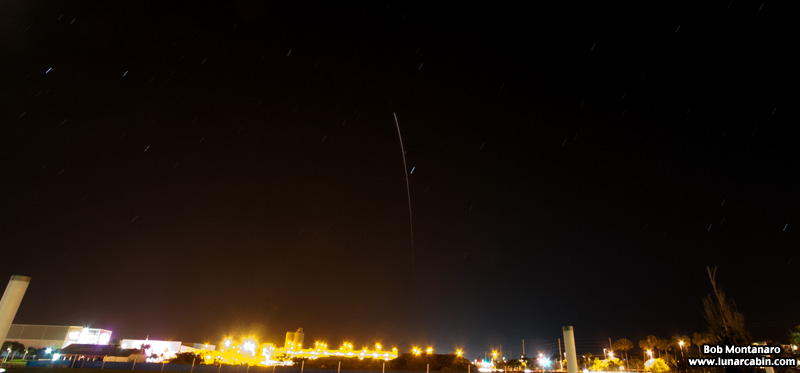 |
|
Looking east as the Falcon 9 second stage heads down toward the horizon as it follows the curve of the Earth. |
|
10 May 2016 JCSAT-14 Falcon 9 first stage returned to Port Canaveral after successfully landing on the barge droneship after launching JCSAT-14 on its way into orbit. |
|
 |
|
| A panorama of the Port from atop Exploration Tower. The rocket stage is in the center of the image across the water with a crane tilting over it. | |
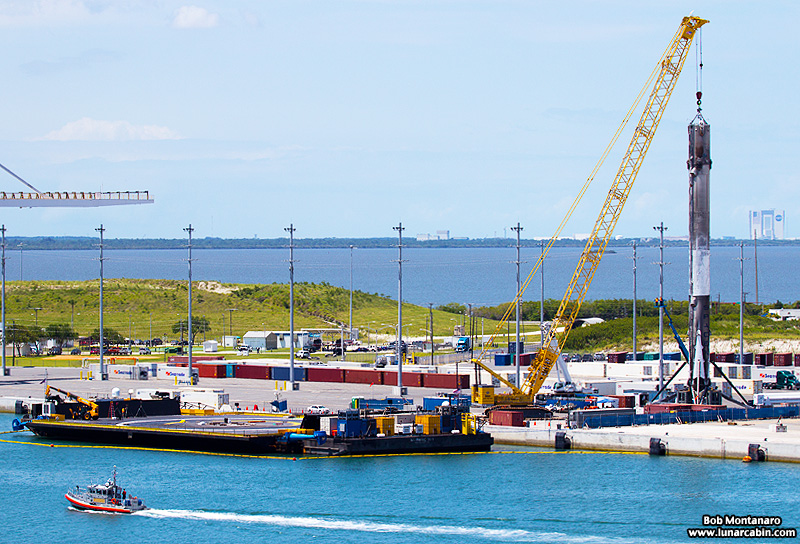 |
|
| A view of the "Of Course I Still Love You" droneship atop which the booster landed. The booster towers overhead onshore after being moved off the barge by the crane. | |
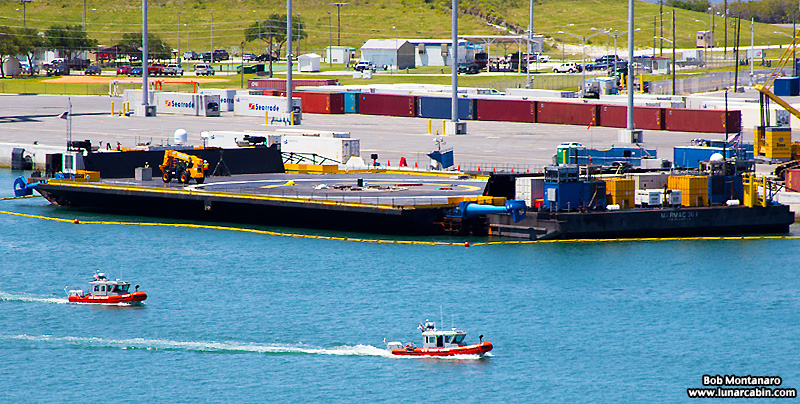 |
|
A closer look at the droneship. |
|
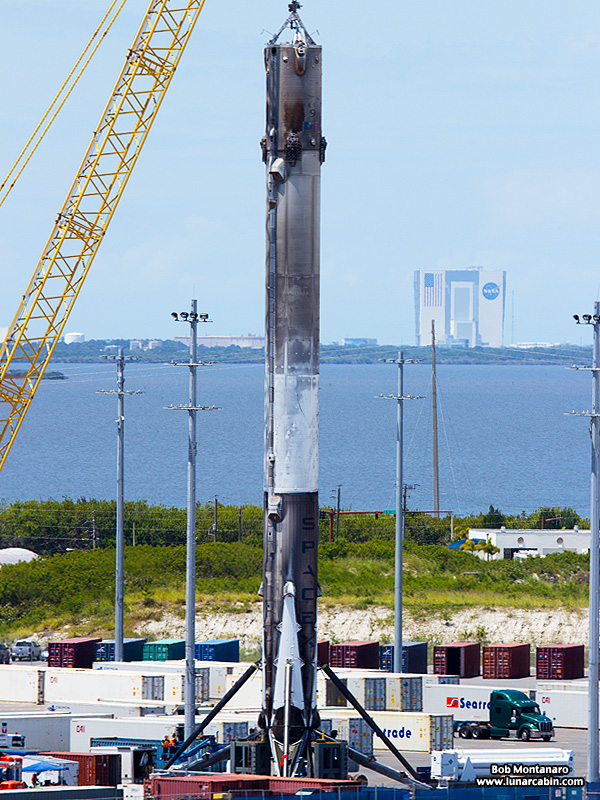 |
|
| Due to the high speed and altitude the first stage had to reach to deploy the second stage with the JCSAT satellite to reach the Geostationary Transfer Orbit the first stage was not expected to survive the long fall and accompanying high heating through the atmosphere. Though a bit charred and showing signs of wear and tear, the booster survived despite the odds being against it. | |
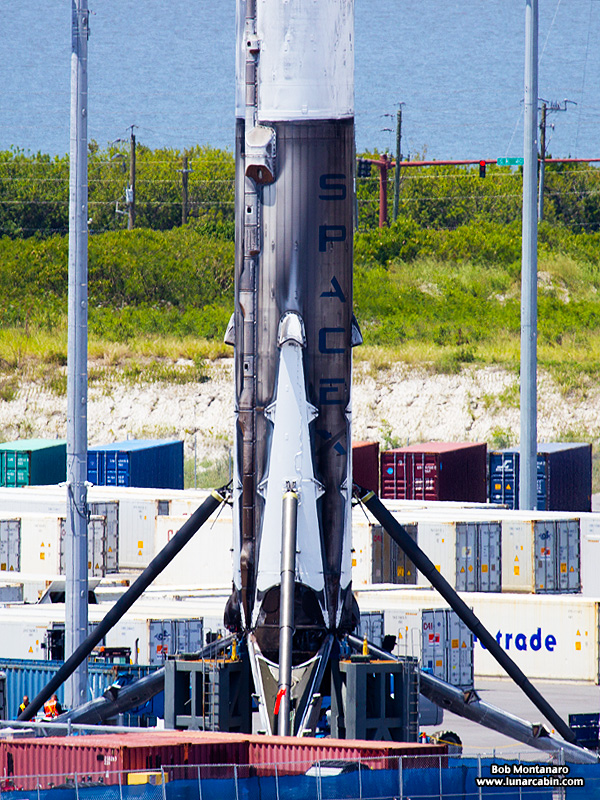 |
|
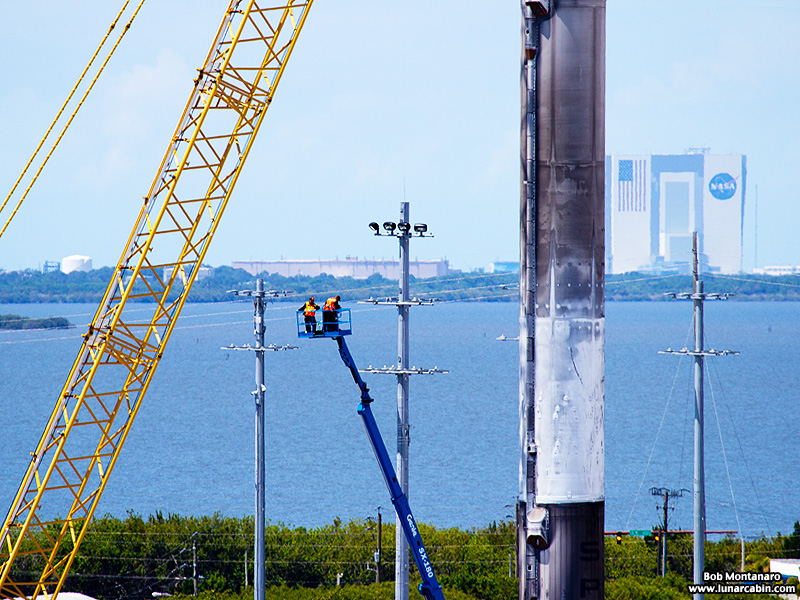 |
|
| Two men on a cherry picker going up to work on the first stage. Once it is made safe to do so, the booster will be pitched over onto its side and taken by trailer back to a SpaceX facility inside Cape Canaveral Air Force Station. The Vehicle Assembly Building inside Kennedy Space Center can be seen just right of the rocket. | |
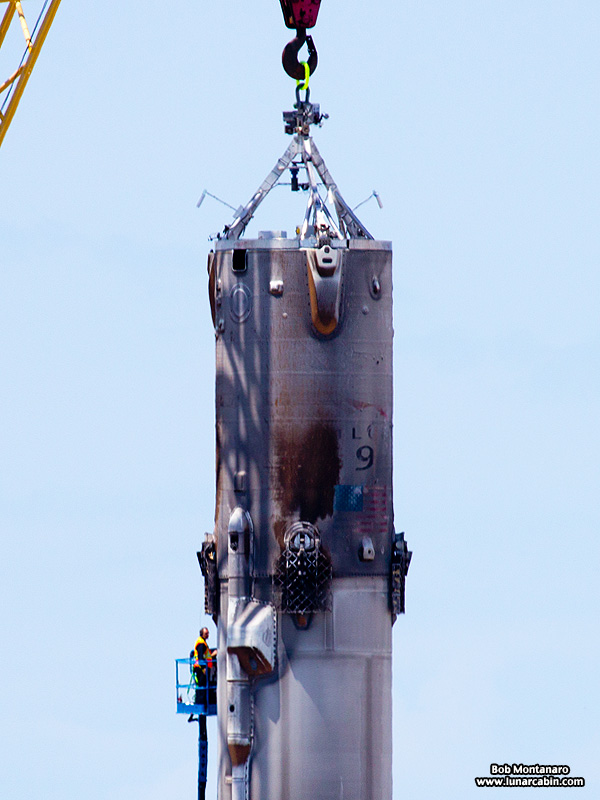 |
|
Note the grid fins retracted against the side of the first stage. They help stabilize the booster during landing. |
|
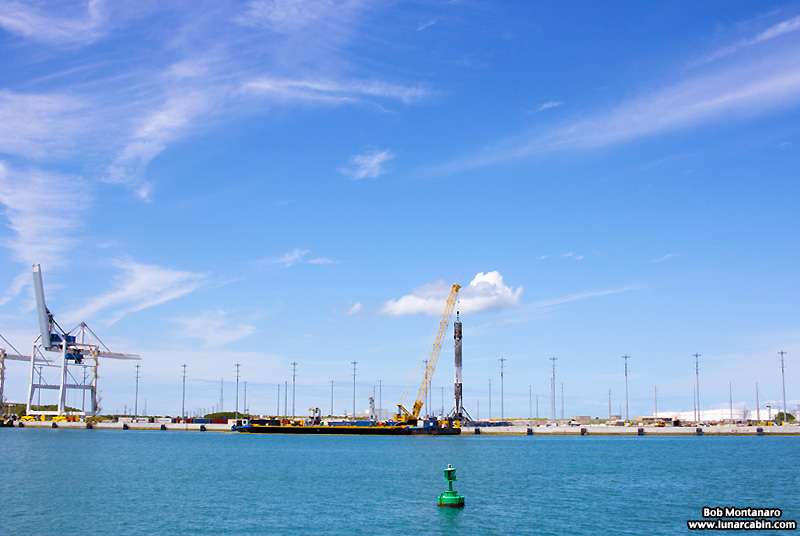 |
|
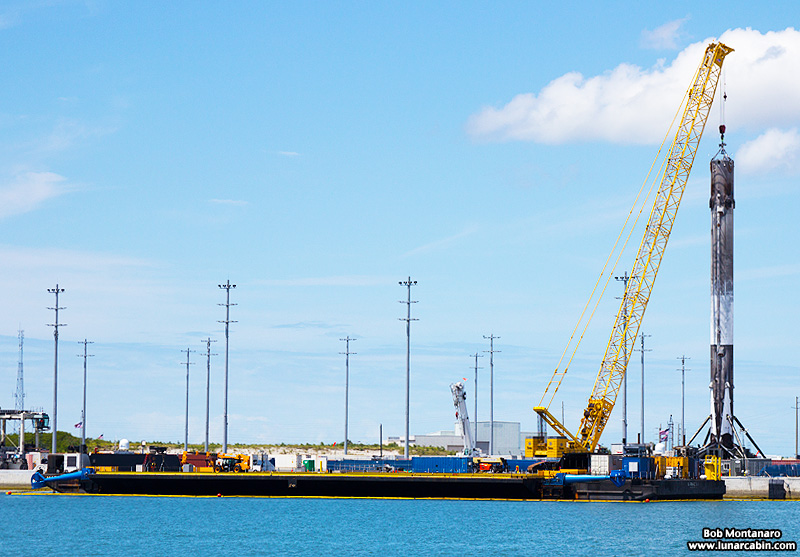 |
|
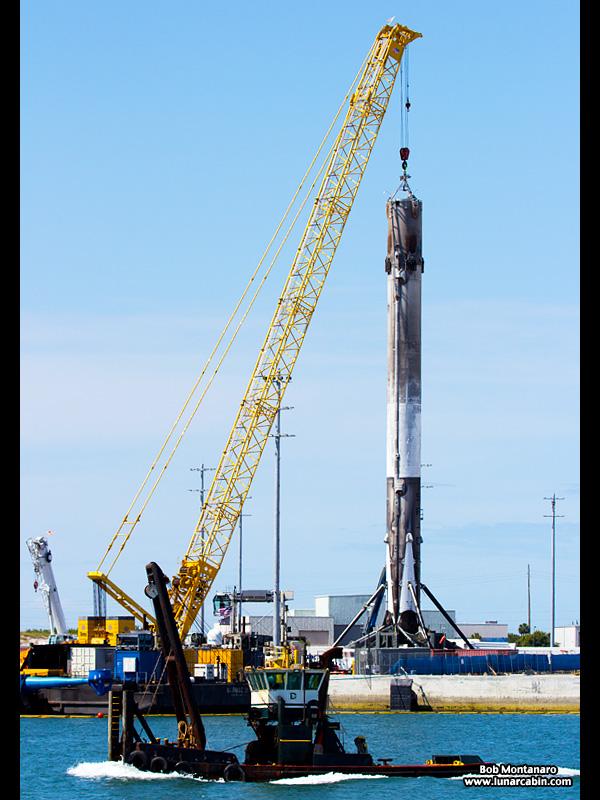 |
|
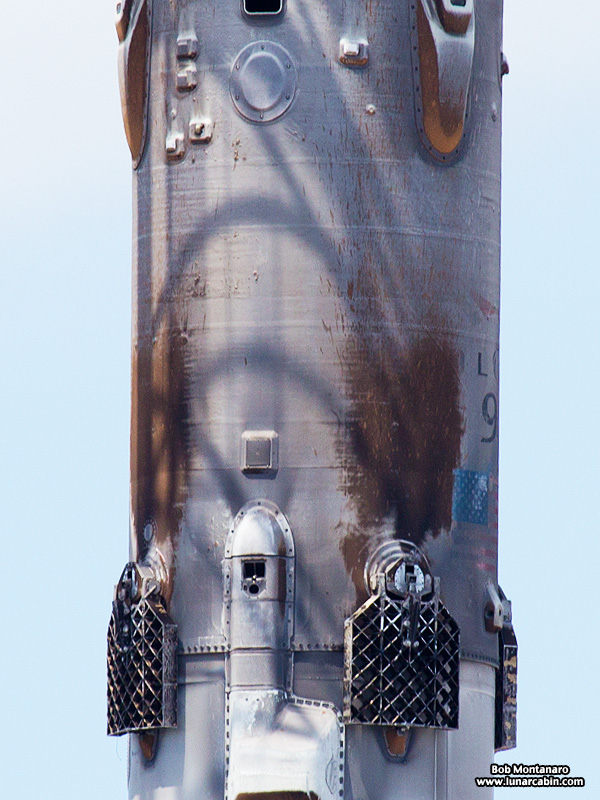 |
|
A better view of the grid fins and interesting splatter patterns near the top of the first stage. |
|
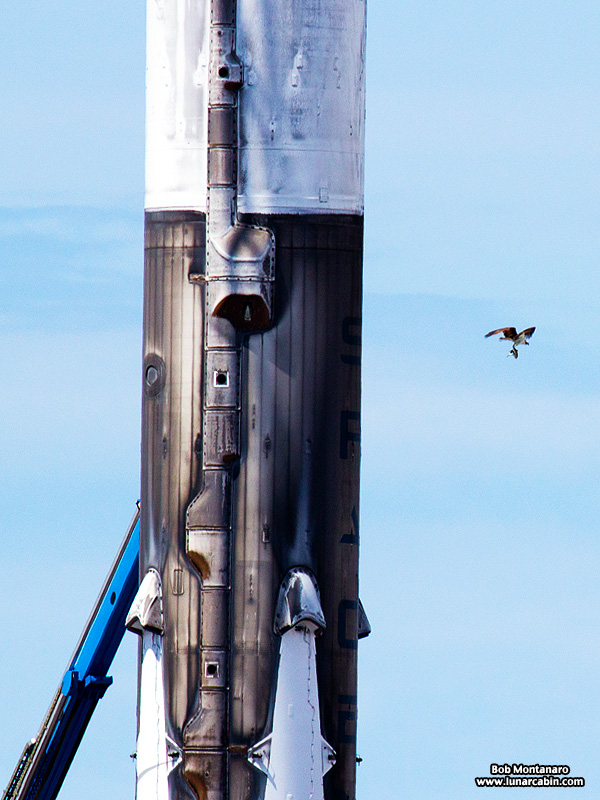 |
|
An Osprey flew by with a big fish it caught. |
|
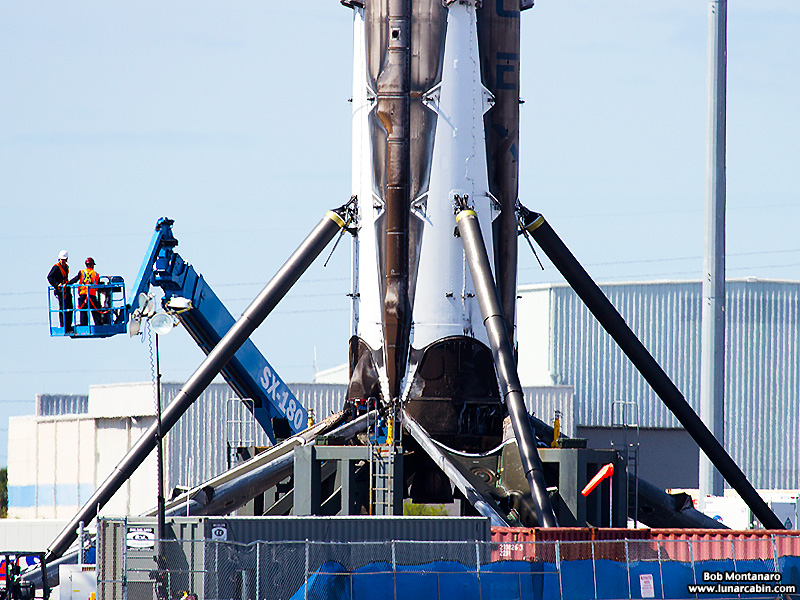 |
|
A good view of the landing legs. Go to Page Two of Two > > > > |
|
All contents copyright Lunar Cabin |
|